8,000 killed or drowned 500 | Date 22 June 1593 | |
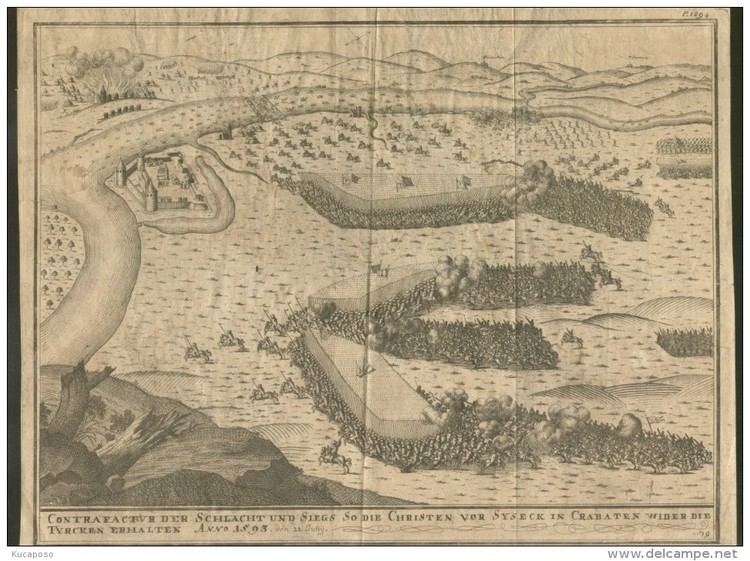 | ||
Result Decisive Christian (Germanic-Croatian) victory Similar Battle of Krbava Field, Battle of Pločnik, Battle of Keresztes, Capture of Peñón of Algiers, Battle of Ponza (1552) | ||
Battle of sisak
The Battle of Sisak (Croatian: Bitka kod Siska; Slovene: Bitka pri Sisku; German: Schlacht bei Sissek; Turkish: Kulpa Bozgunu) was fought on 22 June 1593 between Ottoman regional forces of Telli Hasan Pasha, a notable commander (Beglerbeg) of the Eyalet of Bosnia, and a combined Christian army from the Habsburg lands, mainly Kingdom of Croatia and Inner Austria. The battle took place at Sisak, central Croatia, at the confluence of the rivers Sava and Kupa.
Contents
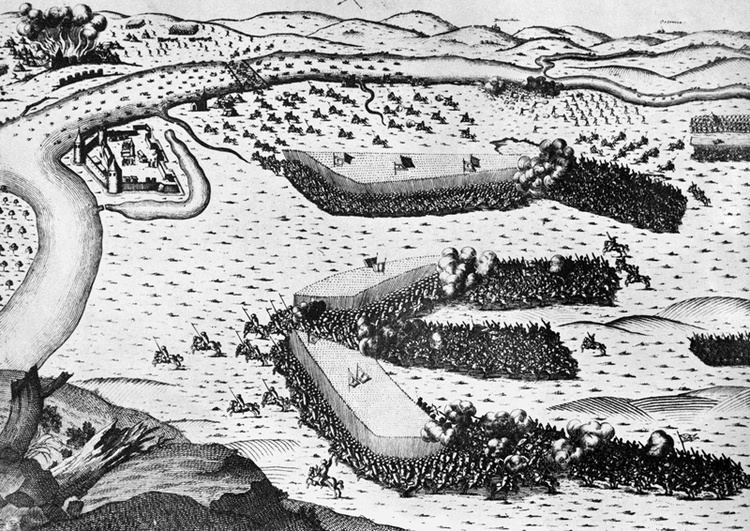
Earlier in 1591 and 1592 the Ottomans had two failed attempts of capturing the Sisak fortress, but managed to take the strategically important fortress of Bihać in 1592. The Sisak fortress was again besieged by a large Ottoman force on 15 June 1593. The garrison in Sisak was commanded by Blaž Đurak and Matija Fintić, both from the Archdiocese of Zagreb.
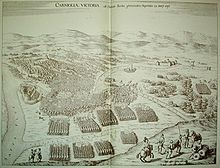
An army under the supreme command of the Styrian general Ruprecht von Eggenberg was quickly assembled to break the siege. The Croatian troops were led by the Ban of Croatia, Thomas Erdődy, and major forces from the Duchy of Carniola and the Duchy of Carinthia were led by Andreas von Auersperg, nicknamed the "Carniolan Achilles". They made a surprise attack on the besieging forces on 22 June. The ensuing battle resulted in a crushing defeat for the regional Ottoman forces, triggering the Long War.
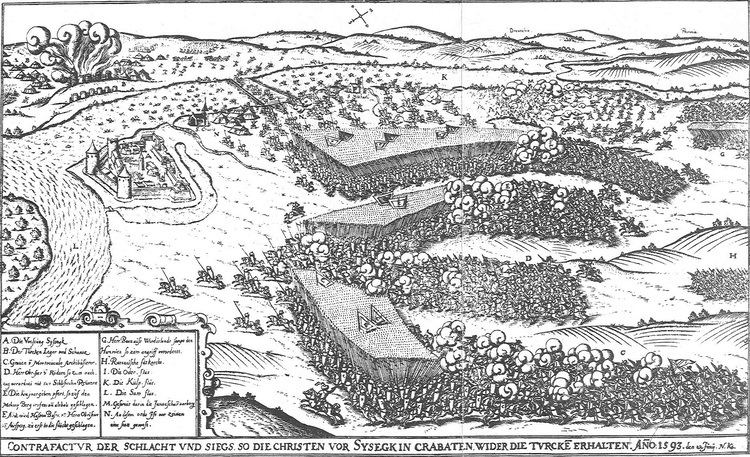
Background

The central authorities of both the Ottoman Empire and the Habsburg Monarchy were rather reluctant to fight each other after several campaigns on Hungarian and Moldavian land and four renewals of the 1547 truce, but large scale raids were being mounted into each other’s territories: There had been numerous raids into Habsburg Hungary by the akıncı, the irregular Ottoman light cavalry, and on the other hand; Uskoci (Balkan Habsburg-sided irregular soldiers on the eastern Adriatic coast) were being encouraged to conduct raids into Ottoman territory in the Balkans. Clashes on the Croatian frontier also continued despite the truce. The Croatian–Ottoman border went between Koprivnica and Virovitica to Sisak, then westward to Karlovac, southward to Plitvice Lakes, and southwest to the Adriatic Sea. Croatia at the time had only 16,800 km² of free territory and around 400,000 inhabitants.

Although its strength was depleted from the constant conflicts on the border, late in the 16th century Croatian fortified cities were able to hold Ottoman forces at bay. During this period Ottoman Bosnian forces had several attempts to seize major forts and towns across the Una and Sava rivers. On 26 October 1584 smaller Ottoman units were defeated at the battle of Slunj, and on 6 December 1586 near Ivanić-Grad. However, Ottoman raids and attacks were increasing and the Croatian nobility were fighting without Habsburg support.
Premise
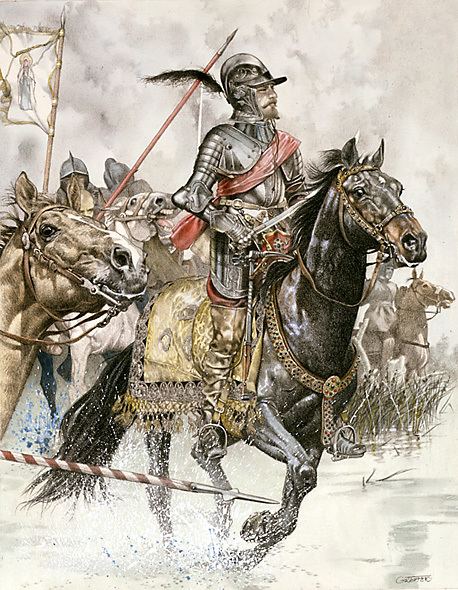
In August 1591, without a declaration of war, Telli Hasan Pasha, Ottoman beylerbey of the Eyalet of Bosnia and vizier, attacked Croatia and reached Sisak, but was repelled after four days of fighting. Thomas Erdődy, Ban of Croatia, launched a counterattack and seized much of the Moslavina region. The same year Hasan Pasha launched another attack, taking the town of Ripač on the Una River. These raids forced Erdődy to convene a meeting of the Croatian Parliament in Zagreb on 5 January 1592 and declare a general uprising to defend the country. These actions of the regional Ottoman forces under Hasan Pasha seem to have been contrary to the interest and policy of the central Ottoman administration in Constantinople, and due rather to aims of conquest and organized plundering by the war-like Bosnian sipahi, although perhaps also under the pretext of putting an end to Uskok raids into the Eyalet; since the two realms had signed a nine-year peace treaty earlier in 1590.
In June 1592 Hasan Pasha captured Bihać and directed his forces towards Sisak for the second time. The fall of Bihać caused fear in Croatia since it had stood on the border for decades. Hasan Pasha also successfully captured and burnt the Ban's military encampment in Brest on 19 July 1592, built by Erdődy a few months earlier near Petrinja. The camp had around 3,000 men, while the Ottoman forces had around 7-8,000. On 24 July the Ottomans started besieging Sisak, but lifted the siege after 5 days of fighting and heavy losses, leaving the region of Turopolje ravaged. These events encouraged the Emperor to make more effort in order to stop the Ottomans, whose actions were halted by the winter.
Battle
In spring 1593 beylerbey Telli Hasan Pasha gathered a large army in Petrinja and on 15 June again crossed the Kupa River and started his third attack on Sisak. His army consisted of around 12,000-16.000 troops from the sanjaks of Klis, Lika, Zvornik, Herzegovina, Pojega and Cernik. Sisak was defended by at most 800 men commanded by Matija Fintić, who died on 21 June, and Blaž Đurak, both from Kaptol, seat of the Roman Catholic archbishop of Zagreb. The town was under heavy artillery fire and a call for help was sent to the Croatian ban. Reinforcements led by Austrian Colonel-General Ruprecht von Eggenberg, Ban Thomas Erdődy and Colonel Andreas von Auersperg arrived near Sisak on 21 June. They numbered around 4,000-5,000 cavalry and infantry. Mustafa Naima narrates that, after making the preparatives before the battle, Hasan Pasha commanded Gazi Hodža Memi Bey, father of Sarhoš Ibrahim Pasha, a renowned military commander, to cross the river and recognizing the enemy forces. He reported back that a battle would end in ruin, as the Habsburgs had such a superior force (probably referring to its larger quantity of guns and ammunition). Naima also narrates that after hearing this, Hasan Pasha, who was credited as a fearless military leader, and happened to be playing chess at that very moment; severely responded to him: "Curse you, you despicable wretch! to be afraid of numbers: out of my sight!", and then he mounted his horse and began to mobilize the Ottoman forces across the bridges he had previously ordered to be constructed.
On 22 June, between eleven and twelve o'clock, Erdődy and Auersperg's forces attacked Ottoman positions with the army of Erdödy in front, consisting of Croatian hussars and infantry. The first assault was repulsed by Ottoman cavalry. Then the soldiers of Colonel Auersperg joined the attack followed by Eggenberg's and other commanders' men, forcing the Ottomans back towards the Kupa River. The army of Hasan Pasha was driven into a corner between the rivers Odra and the Kupa, with the bridge across Kupa taken by soldiers from Karlovac. The Sisak garrison led by Blaž Đurak attacked the remaining Ottoman forces that were besieging Sisak. Caught in the middle between two Christian army flanks, the Ottomans panicked and started a chaotic retreat, trying to swim across the Kupa River and reach their camp. The bulk of the army with most of the commanders were either slaughtered or drowned in the river.
The battle lasted around one hour and ended in a total defeat of the Ottomans. Predojević did not survive the battle. Among the Ottoman commanders that were killed or had drowned in Kupa were Sultanzade Mehmet Bey of the Sanjak of Herzegovina, Džafer Bey of the Sanjak of Pakrac-Cernica as well as Hasan's brother, Arnaud Memi Bey of the Sanjak of Zvornik and Ramazan Bey of the Sanjak of Pojega. Ibrahim Bey of the Sanjak of Lika managed to escape. Total Ottoman losses were around 8,000 killed or drowned. The Christian army captured 2,000 horses, 10 war flags, falconets and artillery ammunition left by the Ottomans. Christian army losses were light, a report from Andreas von Auersperg submitted to Archduke Ernest on 24 June 1593 mentions only 40-50 casualties for his troops.
Aftermath and consequences
Christian Europe was delighted at the grandiose reports of the victory at Sisak. Pope Clement VIII praised the Christian military leaders, sending a letter of gratitude to Ban Erdődy, while King Philip II of Spain named Erdődy a knight of the Order of Saint Saviour. The Archdiocese of Zagreb built a chapel in the village of Greda near Sisak to commemorate the victory and decreed that a gratitude mass should be held every 22 June in Zagreb. The cloak of Hasan Pasha was given to the Ljubljana Cathedral. Blaž Đurak, commander of the Sisak garrison, was awarded by the Croatian Parliament for his contribution to the victory.
Ban Thomas Erdődy wanted to take advantage of the victory and take Petrinja, where the remnants of the Ottoman army fled. However, Colonel General Eggenberg considered that there was not enough food for their army and the attack on Petrinja was halted. After news of the defeat reached Constantinople, a revenge was demanded from the military leaders and the Sultan's sister, whose son Mehmed was killed in the battle. Although the action of Hasan Pasha was not in accordance with the interests and policy of the Porte, the Sultan felt that such an embarrassing defeat even of a vassal acting off his own bat could not go unavenged. Sultan Murad III declared war on Emperor Rudolf II that same year, starting the Long War that was fought mainly in Hungary and Croatia. The war extended through the reign of Mehmed III (1595-1603) and into that of Ahmed I (1603-1617).
During the war the Ottomans managed to take Sisak. On 24 August 1593 the Ottomans used the absence of a large army near Sisak, which was defended by 100 soldiers. With strong cannon fire they managed to break through the walls and on 30 August the fortress surrendered. Sisak was liberated on 11 August 1594, when the Ottoman garrison fled and set the fortress on fire. The Long War ended with the Peace of Zsitvatorok on 11 November 1606, marking the first sign of the suppression of Ottoman expansion into Central Europe and stabilization of the frontier for half a century. Inner Austria with the duchies of Styria, Carinthia and Carniola remained free from Ottoman control. Croatia was also able to maintain its independence from further Ottoman incursions and made some territorial gains following the peace treaty, such as Petrinja, Moslavina and Čazma. It is also important to point out that after this first great Ottoman defeat in northwestern Balkans, the Orthodox Christian subjects of the empire, particularly Serbs and Vlachs (who had been loyal and military useful) began then to lose faith in their Muslim masters, and began passing slowly over to the Habsburg side by emigrating from Ottoman-controlled lands to those of the Habsburgs, or even revolting against the Ottomans in their own territory (Uprising in Banat).
Legacy
As the battle took place on Croatian territory and the main body of the Christian defenders consisted of Croatian troops, the victory has ever since played a major role in the historiography of Croatia. The Croatian government issued a commemorative stamp in 1993 called "Victory at Sisak". The traditional daily ringing of the small bell of Zagreb Cathedral at 2 PM is in memory of the battle as it was the bishop of Zagreb who had borne the major part of the costs of the fortress of Sisak.
Since fighters from neighbouring Carniola re-enforced the defenders, the battle is also a part of the Slovenian tradition. On 22 June 1993, the Republic of Slovenia issued three memorial coins and a postage stamp to commemorate the 400 years anniversary of the battle of Sisak.
